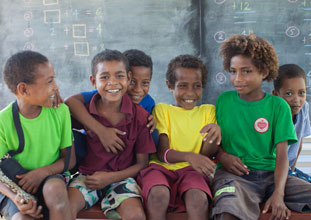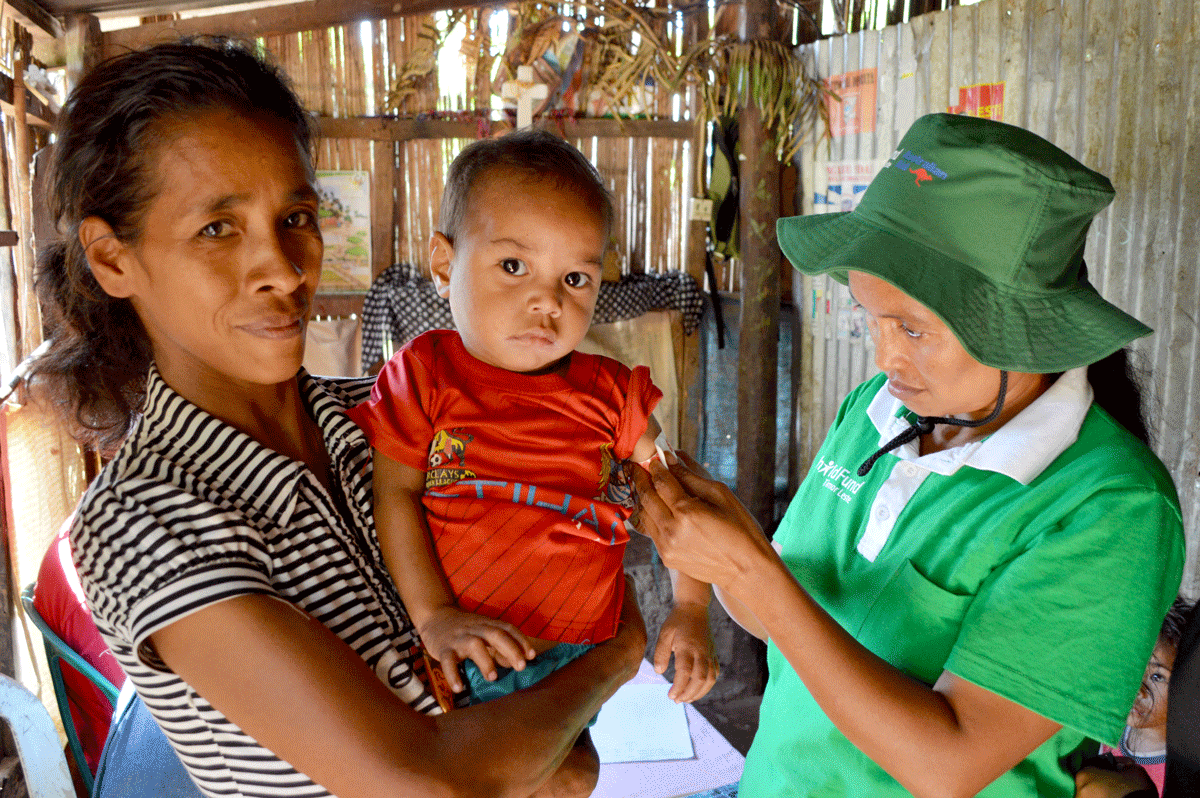Pictures often communicate far more efficiently than words, and teachers are discovering that this holds true in the small classrooms of Western India, where children are learning the alphabet and the names of animals, fruits and vegetables through paintings and pictures.
“Earlier, I could not tell the difference between a cabbage and a cauliflower. Now, I know all the fruits and vegetables that we eat,” says 4-year-old Vaishnavi. Vaishnavi is one of the 30 children enrolled in an Early Childhood Development (ECD) centre in the Raigad district of Maharashtra state, India, where ChildFund works in 43 rural villages. “Cauliflower is my favourite vegetable, and it contains many vitamins,” she adds.
Vaishnavi`s best friend, Ashok, is more interested in animals, particularly lions. He uses a story that his teacher told him to explain that the lion is the king of the jungle, “You know, a lion won`t kill other animals if it is not hungry.”
As the program manager of PRIDE India, ChildFund`s local partner organisation in the region, Dr. Virendra Kulkarni believes that young children explore visual art with both a creative and a scientific eye.
“Through art, they not only identify objects and concepts clearly, they also try to explore everything related to them,” he explains. “Wall paintings are one of the best ways to teach children, with the aid of visual expression. Our role is to provide them with materials and inspiration, then to stand back and let them go.”
Shanta Ghatge, a tutor at the ECD centre, agrees: “Wall paintings, posters and other wall decorations not only make the classrooms look great, but they also make learning easy for children and remind them of concepts.”
“We cannot just talk all the time in class,” she explains. “Children need to be stimulated in their learning, and we need such wall paintings, posters and other teaching aids to make their learning interesting”.
Ghatge, who has been an ECD teacher in the area for more than 20 years, says she follows a curriculum adopted by ChildFund which involves the examination of artwork, singing, storytelling, drawing and painting.
“Although the children like almost all the activities, the most popular is definitely creating their own art,” Ghatge says. “I often give out drawing sheets and watercolours and ask them to paint and draw. They just love this activity.”
Research has shown that participating in art, music and storytelling activities helps children develop language, mathematics and social skills. “These essential activities can help the young brain develop to its fullest capacity,” Dr. Kulkarni says. “In all our ECD centres, we use learning methods that are recognized as the best practices for pre-schoolers.”
“One of them is using rhythm to help children develop patterning skills and make relationships between the rhythm, beat and words,” he explains. “There are a lot of local language rhymes that teachers use to improve children`s patterning abilities, while toys and other aids are used to improve their motor skills.”
Ghatge points out that these methods also allow children to have fun in the classroom. “Amidst all this noise, we certainly know one thing: These children are learning while also enjoying their childhoods.”
ChildFund has been working in Vietnam since 1995 and began community development programs in just one district, in one province. Today, ChildFund works in seven districts across three northern provinces – Bac Kan, Cao Bang and Hoa Binh, where the majority of people are from ethnic minority groups, often the most vulnerable or marginalised sections of the population.
Starting with 220 children in 8 villages, ChildFund Vietnam now helps almost 34,000 children in 488 villages!
Ky Son district is the first area where ChildFund Vietnam began implementing child sponsorship. Ky Son is located in Hoa Binh, a mountainous rural province in northern Vietnam.
When ChildFund began work in four communes in this district, poverty rates were high and there was a critical need for water and sanitation facilities. Preschools and primary schools were in poor conditions and the quality of healthcare was very low, resulting in high rates of child malnutrition.
What has been achieved?
A recent evaluation of our work in these four communes in Ky Son found that ChildFund`s community development programs have contributed to poverty reduction, increased incomes and improved living conditions for children and their families over the past 20 years.
This data shows just how different life is in these communes today:
- Poverty rate has fallen from 30% to less than 5%
- 100% of children now complete primary education
- 100% of children are delivered by a skilled health professional
- % of households with safe water has risen from 26% to 77%
- % of households with a hygienic toilet has risen from 16% to 74%
ChildFund Vietnam country director Deborah Leaver says: “Simply knowing that children and families now assume their children will complete primary school is such a big change in only a generation. With commitment from the community, support from local authorities and hard work from the team at ChildFund we`ve been able to make this massive change in not only the access to education but also significantly improve the quality of their education.
“In less than a generation children`s lives have been changed in a meaningful and sustainable way and that is something to be very proud of.”
Ms Ha, is ChildFund Vietnam`s Education Project Coordinator in Hoa Binh province. She has been with ChildFund Vietnam since day one! We asked her to reflect on her journey:
“My childhood memories are of houses with thatched roofs and mud walls, muddy and rough roads. Then children couldn`t afford to go to school. Families had to worry about every meal and sick people didn`t get proper treatment. Now things have changed for the better. We have better housing and improved roads. Children now can all go to school. Poverty is reduced. People have better access to health care services.
“Working at ChildFund, I have the opportunity to travel frequently to rural areas which resemble the place where I used to live. For 18 years of my life, I lived in the very poor countryside, so I understand thoroughly how poverty affects people`s lives. I always wanted to change the situation even back then. I wanted to work for ChildFund so I could help poor and disadvantaged communities where children were having the same difficulties as me in the past.”
Read about former sponsored child Nhu from Hoa Binh province and find out where they are now.
ChildFund Australia would like to thank all of our supporters who have sponsored children in Vietnam over the past 20 years! Your generous support is having intergenerational life-changing effects on the children and communities we work with in northern Vietnam.

